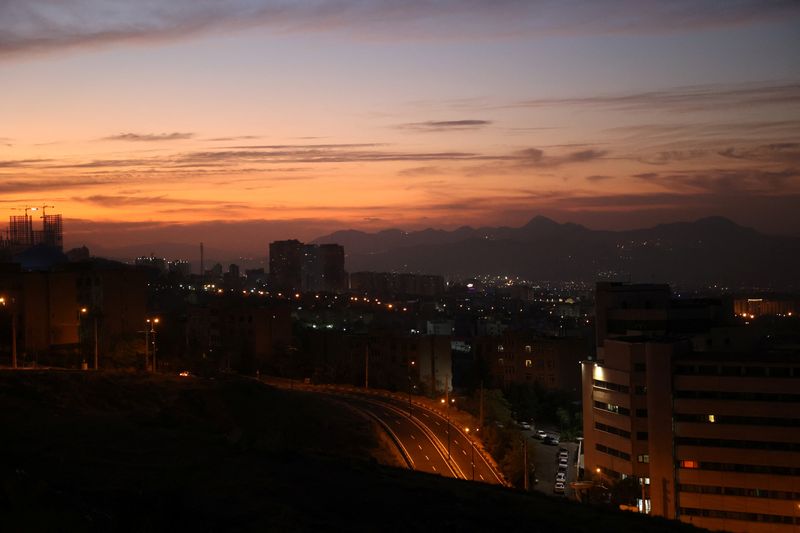(This Oct. 26 story has been refiled to clarify the description of CNA as a non-profit research and analysis organization in paragraph 2)
By Jonathan Landay
WASHINGTON (Reuters) - Commercial satellite imagery showed that Israeli airstrikes hit buildings during an attack on Saturday that Iran used for mixing solid fuel for ballistic missiles, according to separate assessments by two American researchers.
The judgments were reached by David Albright, a former U.N. weapons inspector who heads the Institute for Science and International Security research group, and Decker Eveleth, an associate research analyst at CNA, a nonprofit research and analysis organization.
They told Reuters separately that Israel struck Parchin, a massive military complex near Tehran. Israel also hit Khojir, according to Eveleth, a sprawling missile production site near Tehran.
Reuters reported in July that Khojir was undergoing massive expansion.
Eveleth said the Israeli strikes may have "significantly hampered Iran's ability to mass produce missiles."
The Israeli military said three waves of Israeli jets struck missile factories and other sites near Tehran and in western Iran early on Saturday in retaliation for Tehran's Oct. 1 barrage of more than 200 missiles against Israel.
Iran's military said the Israeli warplanes used "very light warheads" to strike border radar systems in the provinces of Ilam, Khuzestan and around Tehran.
Eveleth said that an image from Planet Labs, a commercial satellite firm, showed that an Israeli strike destroyed two buildings in Khojir where solid fuel for ballistic missiles was mixed.
The buildings were enclosed by high dirt berms, according to the image reviewed by Reuters. Such structures are associated with missile production and are designed to stop a blast in one building from detonating combustible materials in nearby structures.
Planet Labs imagery of Parchin showed that Israel destroyed three ballistic missile solid fuel mixing buildings and a warehouse, he said.
Albright said he reviewed low-resolution commercial satellite imagery of Parchin that appeared to show that an Israeli strike damaged three buildings, including two in which solid fuel for ballistic missiles was mixed.
He did not identify the commercial firm from which he obtained the images.
The buildings, he said, are located about 350 yards from a facility once involved in what the U.N. nuclear watchdog, the International Atomic Energy Agency, and U.S. intelligence say was a comprehensive nuclear weapons development program that Iran shuttered in 2003. Iran denies having such a program.
"Israel says they targeted buildings housing solid-fuel mixers," Eveleth said. "These industrial mixers are hard to make and export-controlled. Iran imported many over the years at great expense, and will likely have a hard time replacing them."
With a limited operation, he said, Israel may have struck a significant blow against Iran's ability to mass-produce missiles and made it more difficult for any future Iranian missile attack to pierce Israel's missile defenses.
"The strikes appear to be highly accurate," he said.
Iran has the Middle East's largest missile arsenal and supplied missiles to Russia for use against Ukraine, and to Yemen's Houthi rebels and the Lebanese militia Hezbollah, according to U.S. officials.
Tehran and Moscow deny that Russia has received Iranian missiles.

Planet Labs imagery reviewed earlier this year by Eveleth and Jeffrey Lewis of the Middlebury Institute of International Studies at Monterey showed major expansions at Khojir and the Modarres military complex near Tehran that the pair assessed were for boosting missile production, Reuters reported.
Three senior Iranian officials confirmed that conclusion.